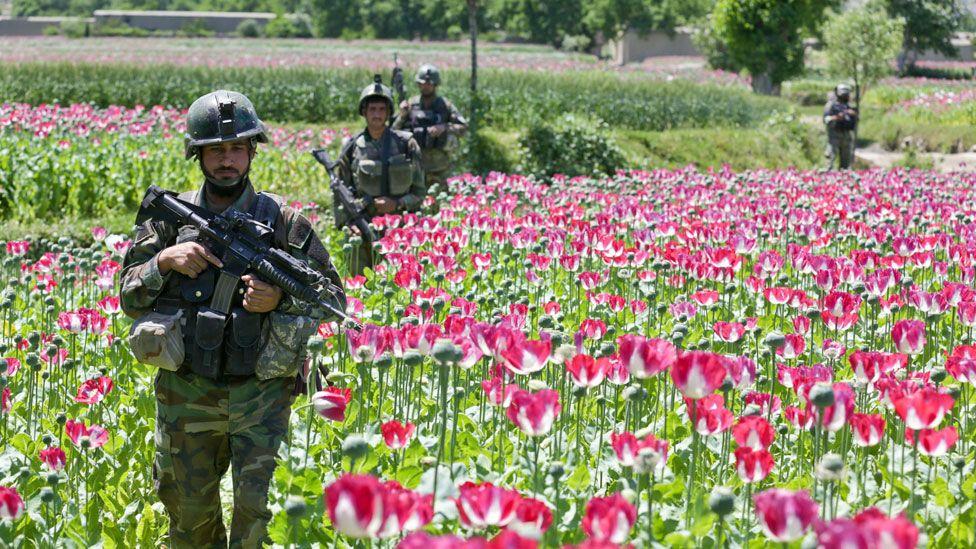
On September 11, 2001—a day that will live in infamy in U.S. history—hijacked planes hit the World Trade Center in New York City and one side of the Pentagon in Washington, D.C., which experienced destruction. President George W. Bush’s administration started a war in Afghanistan on October 7, 2001, after quickly blaming Osama bin Laden, al-Qaeda, and Afghanistan’s Taliban for harboring bin Laden.
The Bush administration, however, had spurned an agreement by which the Taliban would have turned over bin Laden which was agreed to following al-Qaeda’s bombing of the U.S.S. Cole in October 2000. According to Kabir Mohabbat, an Afghan-American businessman and State Department envoy to the Taliban, by the end of 1999, in the face of crippling U.S. sanctions, the Taliban had come to see bin Laden and his training camps as “just a damn liability.”
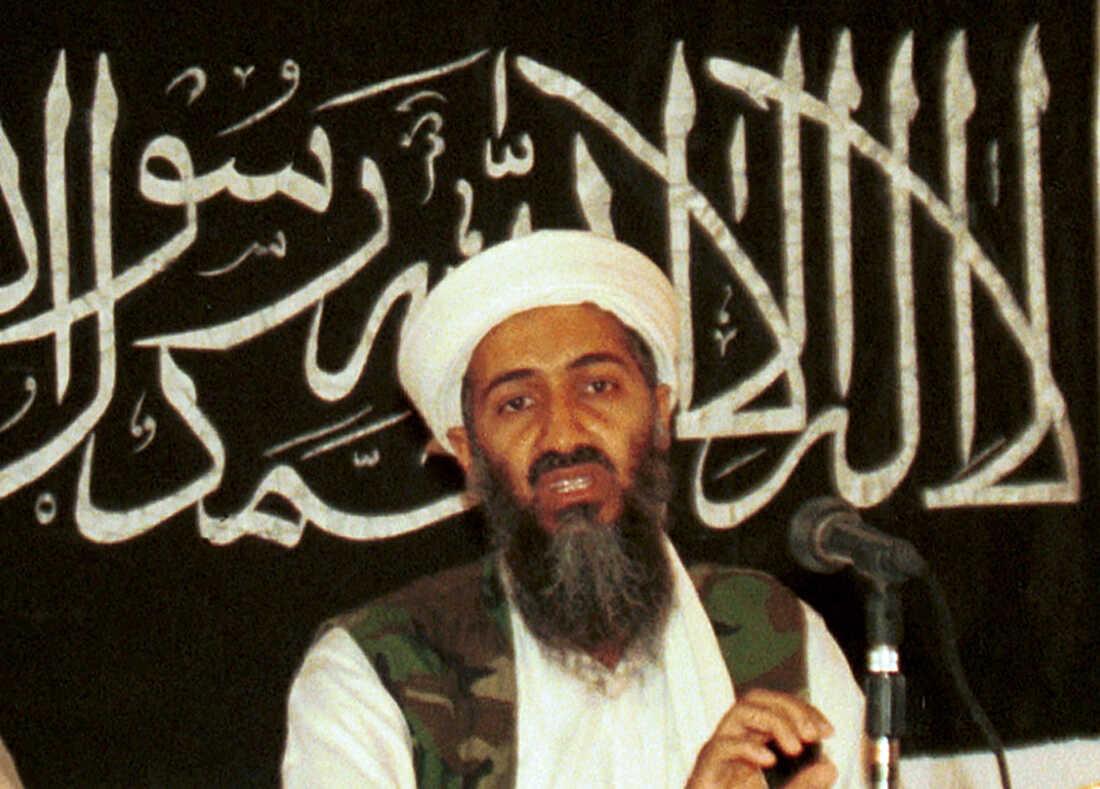
The fact that the Taliban then were hostile to bin Laden, and wanted to turn him over but were refused, indicates that the Bush administration had ulterior motives for invading Afghanistan. These motives apparently included gaining access to resources, particularly opium, to boost the US-dominated Western financial system.
Afghan’s Oil and Lithium
While organizations such as Architects and Engineers for 911 Truth’s nearly 3,500 industry professionals have provided a mass of evidence on the pre-planned demolition of the twin towers and World Trade Center 7,[1] Professor Peter Dale Scott and others unearthed evidence on the Bush administration’s real reason for invading Afghanistan. They say it was for access to its poppy fields and its proximity to oil resources.
Prof. Scott quoted a Foreign Military Studies Office of Fort Leavenworth article published three months before the World Trade Center destruction. It discussed the large inland sea to the west of Afghanistan, through which oil companies proposed a key pipeline: “The Caspian Sea appears to be sitting on yet another sea—a sea of hydrocarbons [oil, gas, etc].”[2]
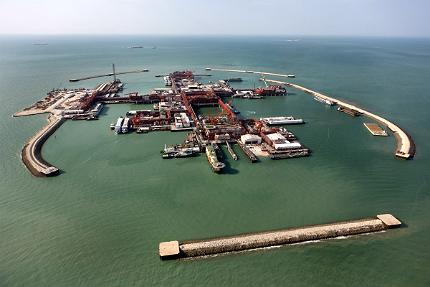
The U.S. had also identified vast Afghan mineral resources, including copper, cobalt, gold and, perhaps most importantly, critical industrial metals like lithium. The Pentagon stated that lithium deposits they found could lead the country to equal or surpass the world-leading supply found in Bolivia. Lithium is increasingly used in batteries of all kinds, from household to auto and airplane, and in various types of electronic equipment.[3]
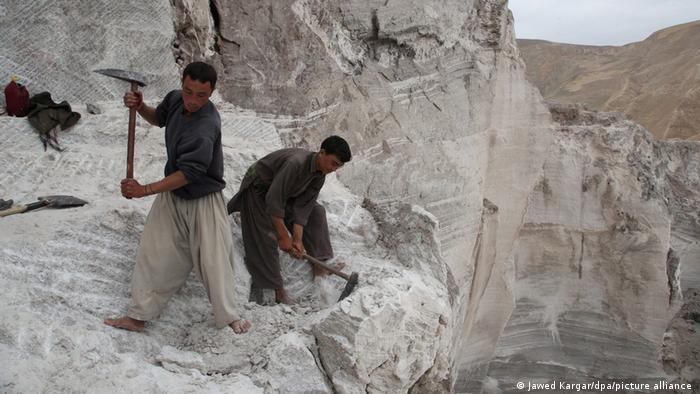
Additionally, a number of sources, such as Minot State University’s Rural Methamphetamine Education Project, offer an interesting side note regarding lithium’s use in underground methamphetamine labs: “Lithium metal is a key element in the clandestine production of methamphetamine. Lithium is used as a reducing agent during the chemical process.”[4]
In September 2017, Reuters stated that President Donald Trump met with Afghanistan President Ashraf Ghani who agreed to let U.S. companies develop Afghanistan’s reserves of minerals. Given the immense challenges of profitable resource extraction in Taliban-held territory, Australian research firm analyst Mike Harrowell said that this project “makes no sense on almost any level” unless understood a state-subsidized, long-term project for Afghanistan.[5]
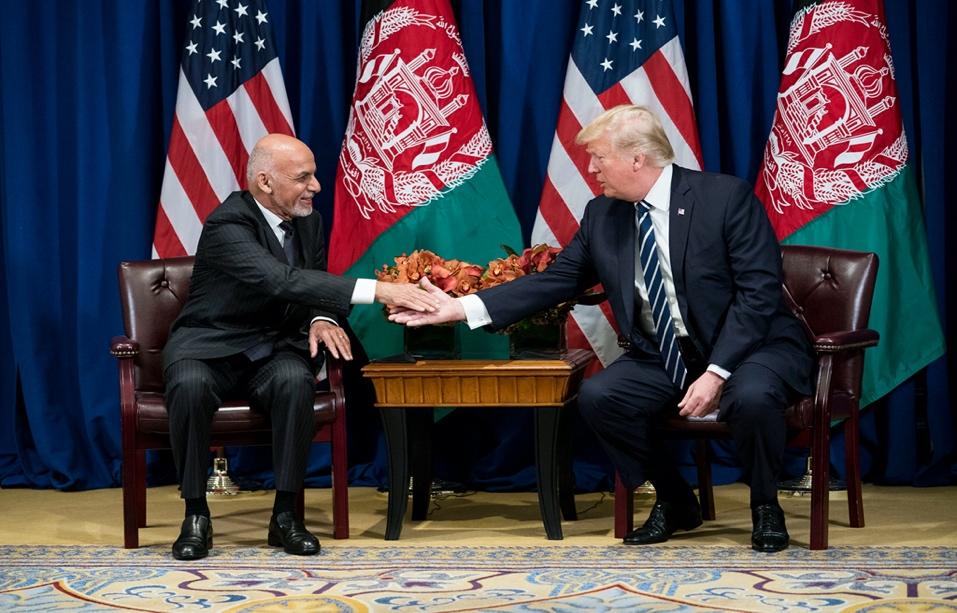
CIA, “Muslim Brotherhood,” Pakistan Intelligence and Heroin Trafficking
Reuters [British AP] confirmed that a guerrilla warfare training camp in Afghanistan was “set up in the early 1980s by the CIA and [Pakistani] ISI and run by … [Gulbuddin] Hekmatyar.” Hekmatyar founded a Muslim Brotherhood-style organization in Afghanistan, Hizb-i-Islami. It eventually became a leading component of the CIA-backed mujaheddin resistance to the Soviet Union.[6]
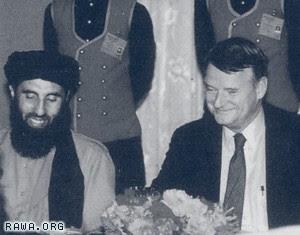
In his book The Politics of Heroin, Professor Alfred W. McCoy stated that Hekmatyar’s organization had hundreds of heroin refineries, and they targeted the Pakistani people, increasing heroin addiction there from 5,000 users in 1980 to 1.3 million by 1986.
This was further confirmed in a 1990 front-page article in The Washington Post which stated that according to a senior White House official, Gulbuddin Hekmatyar and the Pakistan ISI were American allies involved in heroin trafficking.[7]
The increased CIA involvement in the Golden Crescent area for poppy fields along the border of Pakistan and Afghanistan contributed to the ever-increasing opium production there. After a growth to 1,200 tons in 1978, it increased more than three-fold in the next twenty years. The United Nations said Afghanistan’s opium production had risen to 4,600 tons in 1999, or seventy percent of the world’s crop.[8]
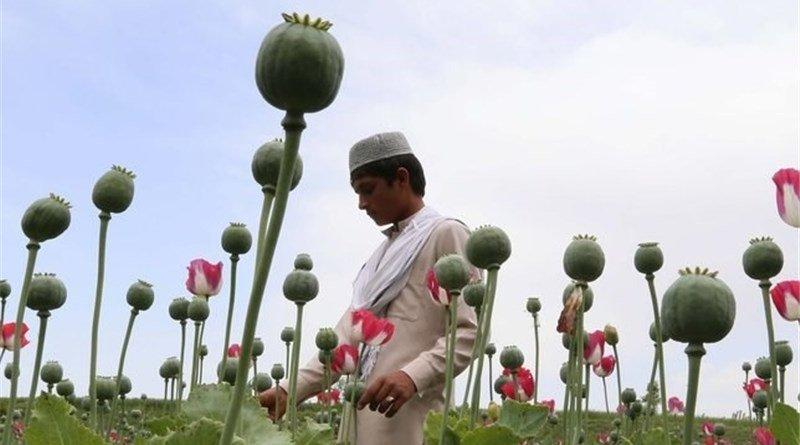
Afghanistan’s Taliban Banned Opium
Before September 11, 2001, a major change took place in Afghanistan that affected the world’s opium trade. The Taliban controlled most of the country at that time and, by 1999, they were profiting the most, in supplying a great majority of the world’s heroin.
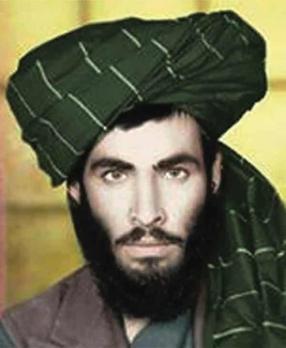
In July 2000, as confirmed by a United Nations report printed in The Washington Post, the Taliban supreme leader, Mullah Mohammed Omar, imposed a ban on opium production in Afghanistan.
The New York Times also printed the 2001 headline “Taliban’s Ban on Poppy a Success, U.S. Aides Say.” That ban “resulted in 70% of the world’s illicit opium production [4,600 tons] being virtually wiped out at a stroke” that year. The Taliban reportedly did this for religious reasons.[9]
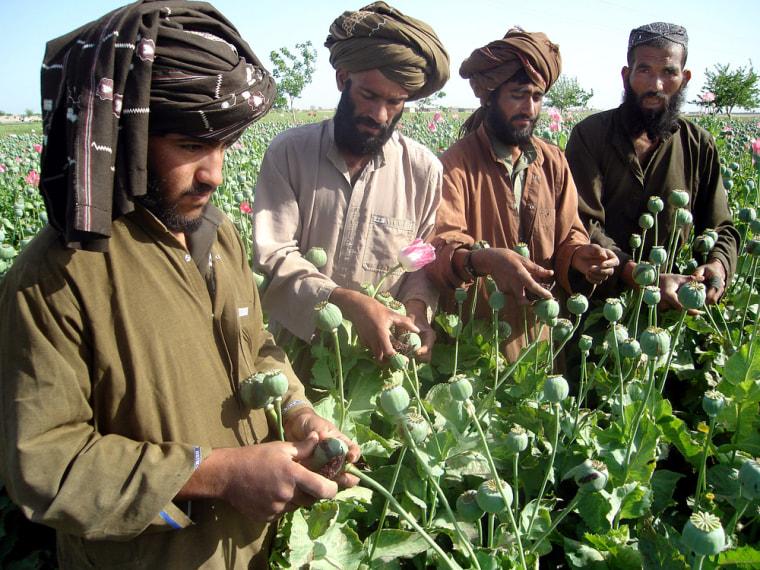
The Northern Alliance, also known as the United Front for the Salvation of Afghanistan, had formed in 1996 as an opposition group to the Taliban. The CIA backed them, as they tried to counter the opium ban in Afghanistan in 2000.
The Northern Alliance increased its own opium production and trafficking. The London Observer wrote: “During the ban the only source of poppy production was territory held by the Northern Alliance. It tripled its production … for 83% of the total Afghan production for 185 tons of opium during the ban.”[10]

U.S. Invasion and Increase in Opium Supply
The Northern Alliance’s drastically low production went on for only 15 months, before the U.S. and other Western countries invaded on October 2, 2001. The timing of the Afghanistan invasion leaves the impression that a motive was to regain control over the opium-producing poppy fields. Besides illicit opium and heroin, opiates are used in various medicines.[11]
After the Afghanistan invasion, the U.S. and British forces put Hamid Karzai in power. Karzai had represented the Northern Alliance/United Front.
In early October 2008, The New York Times published evidence suggesting that Hamid’s brother, Ahmed Wali Karzai, protected caches of heroin found by lower-level Afghan authorities. The article claimed solid evidence of Ahmed Karzai’s drug trafficking, and noted that even the “White House believes Ahmed Wali Karzai is involved in drug trafficking,” though they only talked about him being a political liability.[12]

Several weeks later, The New York Times printed another article stating that Ahmed Karzai had been on the CIA’s payroll for the past eight years. BBC News reported that, by 2007, the 8,000-plus tons of Afghan opium production almost doubled any previous production.[13] In his book American War Machine, Prof. Peter Dale Scott quoted a U.S. State Department source stating that the country accounted for “93% of the world’s opium.”
Prof. Scott also cited a 2006 report to the World Bank which stated that, “at the top level, around 25-30 key traffickers … [worked] closely with sponsors in top [Afghan] government and political positions. Prof. Scott further noted how the CIA worked with Ahmad Shah Massoud, Colonel Abdul Razik, Haji Zaman (who “British and American officials persuaded to return” to Afghanistan in 2001), Sher Mohammed Akhundzada, and Haji Bashar Noorzai who were all involved in drug trafficking.[14]
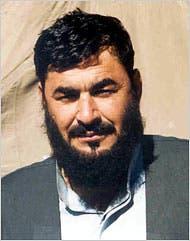
Haji Bashar Noorzai [Source: nytimes.com] 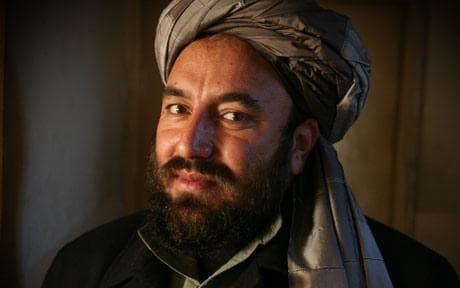
Sher Mohammed Akhundzada [Source: telegraph.co.uk] 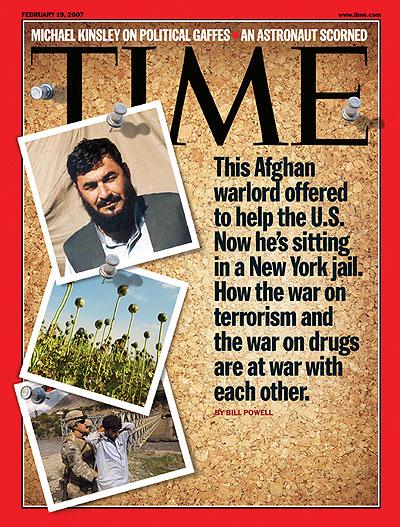
[Source: truthhugger.com]
Opiates, Money Laundering and Stock Markets
A former U.S. Assistant Secretary of Housing and Wall Street insider, Catherine Austin Fitts, explained a little-known aspect of illicit drugs’ huge effect on the U.S. stock market. Fitts had worked in the first President Bush administration and was managing director and a member of the board of directors of Dillon, Read & Co, considered one of the “Wall Street dynasties.” She later started The Solari Group, Inc.[15]
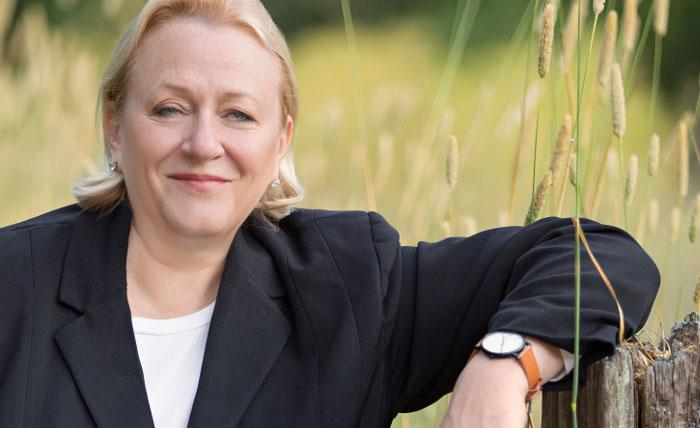
Fitts suggested that the CIA and Department of Justice had created a secret understanding that permitted the CIA to help its allies and assets to traffic in drugs with impunity. Scholars like Alfred McCoy and Peter Dale Scott have documented how CIA assets trafficked Southeast Asian opium from the Golden Triangle during America’s second longest war in Vietnam. Senator John Kerry (D-MA) led a Senate investigation that documented U.S. governmental complicity with drug traffickers in Central America in the 1980s, which was reported on by mainstream publications like the Washington Post. A CIA Inspector General’s report confirmed that covert networks which supplied arms clandestinely to the Nicaraguan Contras (counter-revolutionaries), were bringing narcotics back into American cities with the “blessing of U.S. officials” at the height of the urban drug epidemic.[16]
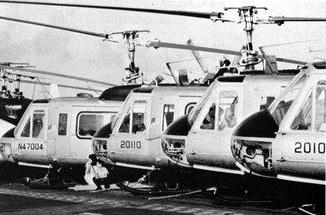
Fitts referred to money made from illicit drug sales as “narco dollars.” She said “The power of narco dollars comes when you combine drug trafficking with the stock market,” detailing how narco dollars exponentially increase the value of a company’s stock. She explained that stocks are valued at 20 times their income so, “for every $100,000 of income [a company] makes, its stock [total market capitalization] goes up $2 million.”[17]
According to Fitts, banks and many other companies “launder” money from drug sales in their company’s income to increase their stock market value. Laundering means taking the cash from drug dealers and listing it in their income reports as part of their sales. With the 20 times increase in the stock value of the company that owns the restaurant and banks, it’s easy to return the money to the drug dealer in other ways that launders it of its source from the illegal drug trade, and hides it from the Internal Revenue Service.[18]
Whatever one makes of Fitts, the uncanny overlap of America’s foreign interventions and the world’s top drug traffickers is cause for concern. As one of the most lucrative international trades, proceeds from drug trafficking cannot but have some considerable impact on the dollar-dominated global financial system.
International Banks’ Laundering and a Stock Theft Excuse?
The head of the United Nations Office on Drugs and Crime agreed with Fitts on the role of all this cash keeping some banks afloat, noting that during the bank crisis of 2008 and 2009, a number of “inter-bank loans were funded by money that originated from the drugs trade … there were signs that some banks were rescued that way.”[19]
The International Monetary Fund stated, “The amount of money laundering occurring on a yearly basis could range between … $600 billion and $1.5 trillion.” U.S. lawmakers believe that “half is being laundered through U.S. banks.” A majority of this money revolves around the drug trade.[20]
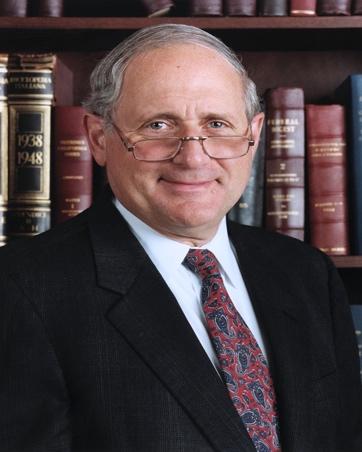
In a 2001 report, Correspondent Banking: A Gateway for Money Laundering, Senator Carl Levin of Michigan, the ranking Democrat on the U.S. Senate Permanent Subcommittee on Investigations, released the results of a year-long investigation on how foreign banks use U.S. banks to launder money.
One of its many findings was that U.S. banks were working with foreign banks and “Laundering illicit proceeds and facilitating crime by accepting deposits or processing wire transfers involving funds that the high-risk foreign bank knew or should have known were associated with drug trafficking.”[21]
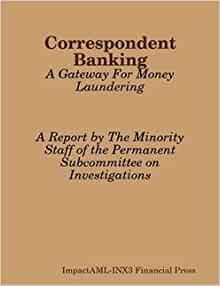
The report implicated Bank of America, Bank of New York, Barnett Bank, Chase Manhattan Bank (now J.P. Morgan Chase), Citibank, First Union National Bank, Harris Bank International, Popular Bank of Florida, Security Bank N.A, and Toronto Dominion Bank (New York branch) in money laundering.[22]
The Los Angeles Times noted that the European banks involved in this money laundering included HSBC, Credit Suisse, Barclays, Lloyds, and ING.[23] Bloomberg News reported that Europe’s largest bank, HSBC, failed to monitor more than $670 billion in wire transfers and $9.7 billion in purchases of U.S. currency, “allowing money laundering, prosecutors said.”[24]

According to Professor James Petras, “U.S. banks have developed a highly elaborate set of policies for transferring illicit funds to the U.S., investing those funds in legitimate businesses and legitimating them … [to] buttress a fragile empire.”[25]
Headlines in France and elsewhere have stated, “The Taliban vow to ban opium again.” While President Biden’s Afghanistan pullout appears commendable, it is uncertain what impact the decline in opium production will have upon the Western financial system if the Taliban’s opium ban is successful.

This article was adapted from chapters of this writer’s book, Drugs as Weapons Against Us.
-
https://www.ae911truth.org/ Peter Dale Scott, Drugs, Oil and War: The United States in Afghanistan, Colombia and Indochina (New York: Rowman & Littlefield Publishers, 2003). ↑
-
Lester W. Grau, “Hydrocarbons and the New Strategic Region: The Caspian Sea and Central Asia.” Military Review, May-June 2001, cited in Scott, Drugs, Oil and War, p. 31. https://cgsc.contentdm.oclc.org/digital/collection/p124201coll1/id/235 On proposed oil pipelines, see Paul Mathieu and Clinton R. Shiells, “The Commonwealth of Independent States Troubled Energy Sectors,” Finance and Development (a quarterly magazine of the International Monetary Fund) Vol. 39 No. 3, September 2002, http://www.imf.org/external/pubs/ft/ fandd/2002/09/mathieu.html ↑
-
James Risen, “U.S. Identifies Vast Mineral Riches in Afghanistan,” The New York Times, June 13, 2010, https://www.nytimes.com/2010/06/14/world/asia/14minerals.html On lithium, http://www.energizer.com/learning-center/pages/battery-comparison.aspx ↑
-
See the Rural Methamphetamine Education Project at Minot State University: www.minotstateu.edu/rcjc/rmep_chem.shtml . ↑
-
Reuters Staff, “Trump, Ghani agree U.S. can help develop Afghanistan’s rare earth minerals,” Reuters, September 21, 2017. https://www.reuters.com/article/us-usa-afghanistan-minerals/trump-ghani-agree-u-s-can-help-develop-afghanistans-rare-earth-minerals-idUSKCN1BX06G ↑
-
On Reuters quote, see Levon Sevunts, “Who’s Calling the Shots? Chechen Conflict Finds Islamic Roots in Afghanistan and Pakistan,” The Gazette, Montreal, October 26, 1999. ↑
-
The Washington Post, May 13, 1990. On increase of addicts in Pakistan, Pakistan Narcotics Control Board, National Survey on Drug Abuse in Pakistan (Islamabad: Narcotics Control Board, 1986), pp. iii, ix, 23, 108; Zahid Hussain, “Narcopower: Pakistan’s Parallel Government?” Newsline (Karachi), December 1989, p. 17. All in, Alfred McCoy, The Politics of Heroin: CIA Complicity in the Global Drug Trade (New York: Lawrence Hill Books, 1991), pp. 453, 455. ↑
-
On 1971-78, see McCoy, The Politics of Heroin, p. 446. On 1999, see Cooley, Unholy Wars, p. 139. Cited in Scott, Drugs, Oil, and War, pp. 40-41. ↑
-
Barbara Crossette, “Taliban’s Ban On Poppy A Success, U.S. Aides Say,” The New York Times, May 20, 2001, http://www.nytimes.com/2001/05/20/world/taliban-s-ban-on-poppy-a-success-us-aides-say.html Also see Paul Salopek, “With Taliban gone, poppy crops return,” Chicago Tribune, December 26, 2001, https://www.chicagotribune.com/news/ct-xpm-2001-12-26-0112260209-story.html ↑
-
Paul Harris, “Victorious Warlords Set to Open the Opium Floodgates,” The Observer/The Guardian (UK), November 24, 2001, http://www.guardian.co.uk/world/2001/nov/25/afghanistan.drugstrade . ↑
-
On dollar per milligram for opiates such as Oxycontin: http://www.sfhp.org/InforMed/2010Q4/PitfallsofOxycontin.aspx . ↑
-
James Risen, “Reports Link Karzai’s Brother to Afghan Heroin Trade,” The New York Times, October 4, 2008, http://www.nytimes.com/2008/10/05/world/asia/05afghan.html ↑
-
Dexter Filkins, Mark Mazetti and James Risen, “Brother of Afghan Leader Said to Be Paid by C.I.A.” The New York Times, October 27, 2009. https://www.nytimes.com/2009/10/28/world/asia/28intel.html Alastair Leithead, “Afghanistan Opium Production at Record High,” BBC News, August 27, 2007. http://news.bbc.co.uk/2/hi/6965115.stm ↑
-
“25-30 traffickers” see “Afghanistan: Drug Industry and Counter-Narcotics Policy,” Report to the World Bank, November 28, 2006, http://web.worldbank.org/WBSITE/EXTERNAL/COUNTRIES/SOUTHASIAEXT/O,,contentMDK:21133060-pagePK:146736~theSitePK:223547,00.html . “93% of world’s opium” from USA Today, January 12, 2009. “Massoud,” of Northern Alliance chosen as principal ally despite national security adviser’s objection, who said “Massoud was a drug trafficker.” Steve Coll, Ghost Wars: The Secret History of the CIA, Afghanistan, and bin Laden, (New York: Penguin, 2004), p. 536. “Zaman” Philip Smucker, Al Qaeda’s Great Escape,” (Washington, D.C.: Brassey’s, 2004), p. 9. “Razik” a drug trafficker and Karzai ally whose rise was “abetted by … NATO commanders.” Mattieu Aikins, “The Master of Spin Boldak,” Harper’s Magazine, December 2009, https://harpers.org/archive/2009/12/the-master-of-spin-boldak/ “Akhundzada–” in 2005 DEA agents found more than nine tons of opium in his office. He was then “given a seat in the senate.” Independent (London), April 13, 2006; James Nathan, “Ending the Taliban’s Money Stream: U.S. Should Buy Afghanistan’s Opium,” Washington Times, January 8, 2009. “Norzzai” found by House International Relations Committee testimony to be smuggling two metric tons of heroin to Pakistan every eight weeks. Mark Corcoran, Australian Broadcasting Company, 2008, see https://apjjf.org/-Peter-Dale-Scott/3145/article.html All cited or adapted from Peter Dale Scott, American War Machine: Deep Politics, the CIA Global Drug Connection, and the Road to Afghanistan (New York: Rowman & Littlefield, 2010). Amazon Kindle edition. “2007 … 93% of world’s opium” from section “America’s Addiction to Drug-Assisted War: Afghanistan in the 1980s.” “Massoud, Zaman, and Razik … drug traffickers” from “America’s Return in 2001, Again with the Support of Drug Traffickers.” ↑
-
On Fitts’s résumé, see http://solari.com/about-us/catherine/ . On Dillon, Read as one of Wall Street Dynasties, see Charles Geisst, The Last Partnerships: Inside the Great Wall Street Money Dynasties (New York: McGraw Hill, 2001), http://books. google.com/books?id=tE2RMBKGItgC&printsec=frontcover&source=gbs_ge_ summary_r&cad=0#v=onepage&q&f=false. Also see her hosting of a drug forum reprinted by The New York Times: http://www.nytimes.com/2001/12/11/national/05DPTRAN.html?pagewanted=all ↑
-
On CIA Inspector General reporting CIA drug trafficking, Dale Russakoff, “Shifting Within Party to Gain His Footing,” The Washington Post, A1, A8, 7/26/04. https://www.washingtonpost.com/archive/politics/2004/07/26/shifting-within-party-to-gain-his-footing/a9f51f36-53c8-4ac7-991e-29acea8b9246/ Catherine Austin Fitts, “Narco Dollars for Beginners; How the Money Works in the Illicit Drug Trade; Part II: The Narco Money Map, Narco News Bulletin, October 31, 2001. http://www.narconews.com/Issue15/narcodollars2.html For other researchers on Air America, see Alfred McCoy, The Politics of Heroin: CIA Complicity in the Global Drug Trade (New York: Lawrence Hill, 1976/1991), and Christopher Robbins, Air America (New York: Avon Books, 1985). ↑
-
Catherine Austin Fitts, “Narco Dollars for Beginners; How the Money Works in the Illicit Drug Trade; Part II: The Narco Money Map, Narco News Bulletin, October 31, 2001. http://www.narconews.com/Issue15/narcodollars2.html. ↑
-
Catherine Austin Fitts, “Narco Dollars for Beginners; How the Money Works in the Illicit Drug Trade; Part II: The Narco Money Map, Narco News Bulletin, October 31, 2001, http://www.narconews.com/Issue15/narcodollars2.html ↑
-
Rajeev Syal, “Drug Money Saved Banks in Global Crisis, Says UN Adviser,” The Guardian/The Observer (UK), December 12, 2009, https://www.theguardian.com/global/2009/dec/13/drug-money-banks-saved-un-cfief-claims ↑
-
“Money Laundering,” FBI Law Enforcement Bulletin vol. 70, no. 5 (May 2001), pp. 1-9. In Michigan State University Libraries, Criminal Justice Resources: Money Laundering: http://staff. lib.msu.edu/harris23/crimjust/moneylau.html . Note that the U.S. General Accounting Office wrote a report in the new millennium outlining the huge scope of money laundering. It stated that “$500 billion to $1 trillion is laundered worldwide annually, according to the United Nations Office of Drug Control and Prevention. ”United States General Accounting Office, “Report to Congressional Requesters: Combatting Money Laundering,” September 2003, http://www.gao.gov/new.items/ d03813.pdf Also see Fitts, “Narco Dollars for Beginners.” ↑
-
Linda Gustitus, Elise Bean, and Robert Roach, Democratic Staff, Permanent Subcommittee on Investigations, Committee on Governmental Affairs, U.S. Senate, “Correspondent Banking: A Gateway for Money Laundering,” p. 28. From different pdf. better web link here: https://www.imolin.org/pdf/imolin/CPRT-107SPRT69919.pdf ↑
-
“Levin Shows How U.S. Banks are Used to Launder Drug Money and Fraud Proceeds: Findings of Year-Long Staff Investigation into High Risk Foreign Banks Released Today,” February 5, 2001, http://www.levin.senate.gov/newsroom/press/release/levin-shows-how-us-banks-are- used-to-launder-drug-money-and-fraud-proceeds/?section=alltypes. For a later hearing where Sen. Levin discussed these issues, see transcript: https://www.govinfo.gov/content/pkg/CHRG-112shrg76061/html/CHRG-112shrg76061.htm ↑
-
Associated Press, “HSBC to Pay $1.9 Billion to Settle Money-Laundering Case,” Los Angeles Times, December 11, 2012, https://www.latimes.com/business/la-xpm-2012-dec-11-la-fi-hsbc-fine-20121212-story.html ↑
-
Christie Smythe, “HSBC Judge Approves $1.9 B Drug Money Laundering Accord,” bloombergnews.com July 3, 2013, http://www.bloomberg.com/news/2013-07-02/hsbc-judge-approves-1-9b-drug-money-laundering-accord.html ↑
-
James Petras, “Dirty Money, Foundation of U.S. Growth and Empire,” La Jornada, May 19, 2001, reprinted in Global Research https://archives.globalresearch.ca/articles/PET108A.html ↑
CovertAction Magazine is made possible by subscriptions, orders and donations from readers like you.
Blow the Whistle on U.S. Imperialism
Click the whistle and donate
When you donate to CovertAction Magazine, you are supporting investigative journalism. Your contributions go directly to supporting the development, production, editing, and dissemination of the Magazine.
CovertAction Magazine does not receive corporate or government sponsorship. Yet, we hold a steadfast commitment to providing compensation for writers, editorial and technical support. Your support helps facilitate this compensation as well as increase the caliber of this work.
Please make a donation by clicking on the donate logo above and enter the amount and your credit or debit card information.
CovertAction Institute, Inc. (CAI) is a 501(c)(3) non-profit organization and your gift is tax-deductible for federal income purposes. CAI’s tax-exempt ID number is 87-2461683.
We sincerely thank you for your support.
Disclaimer: The contents of this article are the sole responsibility of the author(s). CovertAction Institute, Inc. (CAI), including its Board of Directors (BD), Editorial Board (EB), Advisory Board (AB), staff, volunteers and its projects (including CovertAction Magazine) are not responsible for any inaccurate or incorrect statement in this article. This article also does not necessarily represent the views the BD, the EB, the AB, staff, volunteers, or any members of its projects.
Differing viewpoints: CAM publishes articles with differing viewpoints in an effort to nurture vibrant debate and thoughtful critical analysis. Feel free to comment on the articles in the comment section and/or send your letters to the Editors, which we will publish in the Letters column.
Copyrighted Material: This web site may contain copyrighted material the use of which has not always been specifically authorized by the copyright owner. As a not-for-profit charitable organization incorporated in the State of New York, we are making such material available in an effort to advance the understanding of humanity’s problems and hopefully to help find solutions for those problems. We believe this constitutes a ‘fair use’ of any such copyrighted material as provided for in section 107 of the US Copyright Law. You can read more about ‘fair use’ and US Copyright Law at the Legal Information Institute of Cornell Law School.
Republishing: CovertAction Magazine (CAM) grants permission to cross-post CAM articles on not-for-profit community internet sites as long as the source is acknowledged together with a hyperlink to the original CovertAction Magazine article. Also, kindly let us know at info@CovertActionMagazine.com. For publication of CAM articles in print or other forms including commercial internet sites, contact: info@CovertActionMagazine.com.
By using this site, you agree to these terms above.
About the Author
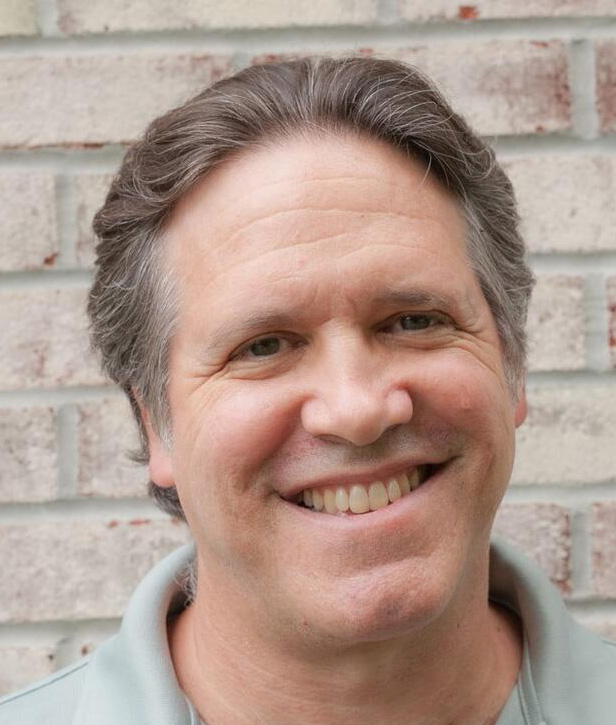
John Potash is the author of the books and films: The FBI War on Tupac Shakur (2nd ed), Drugs as Weapons Against Us: The CIA War on Musicians and Activists, and Shots: Eugenics to Pandemics (2022). His latest film is CIA Drugs R Us! A Drugs as Weapons… Sequel (2024) which reviews CHAOS in light of other CIA operations. John’s work can be found at johnpotash.com and he can be reached at: jlpotash@gmail.com.

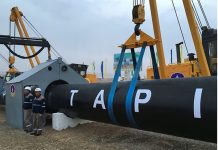



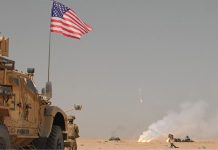
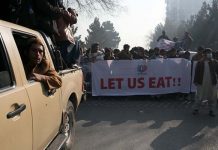
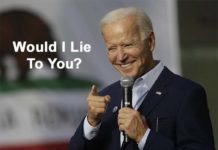
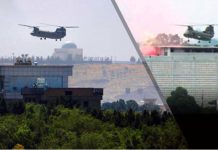
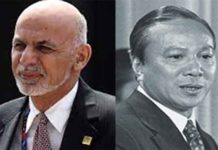

[…] Read the full article in covert action magazine […]
The US is a miasma of corruption. When the illicit drug trade is necessary to continue the expansion of its economy, you know that the whole rotten edifice needs to be pulled down. It is a danger to the whole World!
[…] Was America’s Longest War for Opium, Oil and Propping up the Stock Market? by John Potash […]
https://www.youtube.com/watch?v=AbMtlSCjLcc